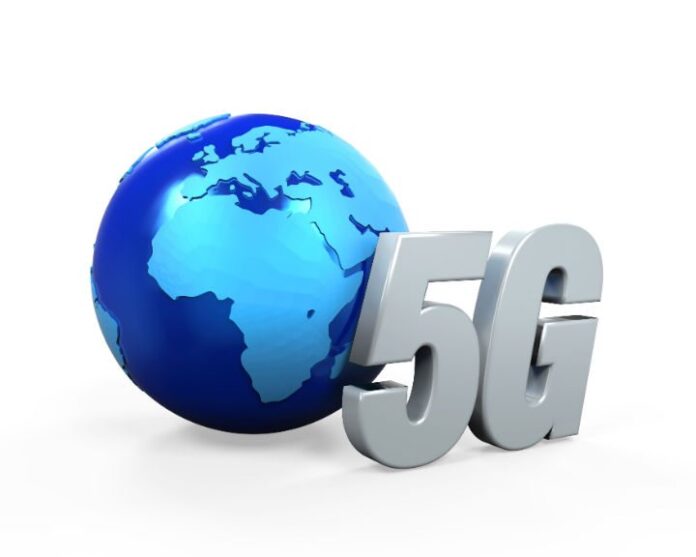Although specifications for “5G” do not yet exist, aspects are crystallizing, including the ability to exploit frequencies never before used for cellular access; far greater capacity than today’s networks support; data rates faster than 1 gigabit per second; and super-low latency. All of these translate into the ability to support a much wider range of use cases than current mobile broadband systems. Some use cases include ultra-high-definition streaming; virtual reality; the expanded “Internet of Things” that could light up billions of new connections; command and control applications that exploit sub-millisecond latency; and wireless-only subscribers who will not need any other source of broadband.
With promising research and develpment occurring globally to prove 5G methods, such as operation in millimeter-wave bands, the hype and excitement around 5G is contagious. The move to 5G represents a tremendous opportunity for industry and the U.S. economy, but the opportunities to fail are equally large, and recent developments in the U.S. are cause for concern.
One area is spectrum and whether a sufficient amount will become available; whether it will be hobbled by excessive restrictions; and whether it will be globally harmonized. For 5G to deliver vast new capacity, it will need five to 10 times as much spectrum as is currently in use by the wireless industry. Recognizing this need, the Federal Communications Commission recently announced forthcoming rulemaking for wireless broadband in frequencies above 24 GHz (https://www.fcc.gov/document/fcc-promotes-higher-frequency-spectrum-future-wireless-technology). The timing is good with the World Radiocommunication Conference (WRC-15) underway. WRC is the international meeting that harmonizes spectrum on a global basis, or at least attempts to, given disparate global spectrum allocations and policies. This conference is the first formal discussion of global 5G bands and will be followed by WRC-19 in 2019 for final decisions. The FCC has announced it intends to create new flexible services rules in 28 GHz, 37 GHz, 39 GHz and 64-71 GHz bands.
Millimeter wave will ultimately deliver massive increases in capacity, but due to propagation of only hundreds of meters, only small cells will be able to take advantage of this spectrum. Small cell challenges persist, however, including difficulties of site acquisition, a shortage of hardware solutions that support multiple operators (the neutral-host holy grail) and backhaul. Even if technology solves these problems within the next decade for massive 5G-based small-cell deployments, this approach still only makes sense for high-density environments.
Equally important for 5G will be new spectrum below 6 GHz, an area in which government has struggled to deliver a coherent spectrum roadmap. For example, consider the 3.5 GHz band (3.55 to 3.7 GHz) controlled by a Spectrum Access System designed to manage the sharing among government users, licensed secondary users and unlicensed tertiary users. This band is off to a rocky start. Not only is the SAS the most complex spectrum management system ever conceived, but original rules are giving the industry pause. Wireless trade association CTIA on Oct. 30 filed a reply to the oppositions to the petitions for reconsideration of the 3.5 GHz report and order, articulating a variety of concerns, including out-of-band emission limits and short three-year licenses. Some people still perceive spectrum sharing, as planned for 3.5 GHz and many future bands, to be a silver bullet to cure our spectrum woes, but much remains to be learned about how disparate systems can share the same spectrum, a process that may take decades to perfect. Undue emphasis on spectrum-sharing for 5G, along with overemphasis on millimeter wave, will undermine 5G.
Achieving global spectrum harmonization is another concern. Today, users can roam globally on 2G and 3G networks without difficulty. In contrast, LTE bands are fragmented. A better job of spectrum harmonization on 5G will be jet fuel for its success. The U.S. proclivity to do things differently than the rest of the world, as it has in the 700 MHz and 2.5 GHz bands, could isolate the U.S. when 5G becomes the dominant standard.
The other area of concern is traffic prioritization, currently banned by the FCC’s Open Internet rules. Even though these rules have the stated intention of delivering a fair and competitive Internet, they cater to emotion and politics and disregard the engineering reality that not all traffic deserves equal priority. Bits from a medical heart monitor or real-time traffic application need to have higher priority than somebody’s video entertainment. LTE was designed with a sophisticated quality-of-service architecture so different applications could obtain the priority they need to deliver the best overall user experience. The move to 5G will have similar mechanisms, but with current rules neither LTE nor 5G can leverage these mechanisms, eliminating vast numbers of use cases. The European Union, recognizing the need for a fair Internet as well as the need to support evolving use cases, just instituted neutrality rules that permit prioritization.
5G is still five years away from deployment, but what happens between now and then could determine the success of the technology as well as the many sectors of the U.S. economy that depend on broadband infrastructure.
Peter Rysavy is president of Rysavy Research, a consulting firm that has specialized in wireless technology for more than 20 years. More at http://www.rysavy.com.
Editor’s Note: Welcome to Analyst Angle. We’ve collected a group of the industry’s leading analysts to give their outlook on the hot topics in the wireless industry.

